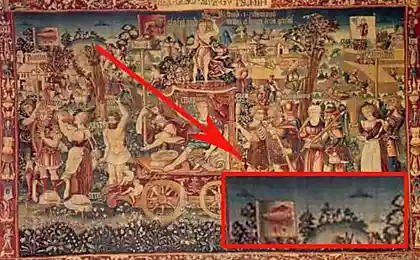1237
Strange religious artifacts (17 photos)
The theme is now dangerous, due to a new law on insulting the feelings of believers. But anyway, for me, the following things seem at least strange.
The most controversial aspect of many religions is a history of preserving "relics," or to put it bluntly samples taken from the bodies of the saints. Here are some of the more unusual examples of objects for veneration.
The hand of the Jesuit missionary of the 16th century, St. Francis Xavier (stored in the gesù in Rome)
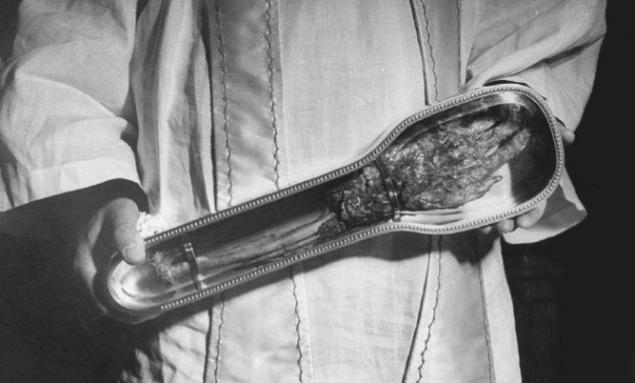

His right hand of the missionary was cut off from his mummified corpse. Cut it in Old Goa, India in 1614 and now it is kept in Rome.
It turns out that it is so sacred that the right hand followed the left, which now is said to be in Japan.
The shroud of Turin with the mysterious image of Jesus Christ (kept in the Cathedral of St. John the Baptist, Turin, Italy)


The heart of the Holy Camille de Lellis, the founder of the order of Camilliani in the late 16th century
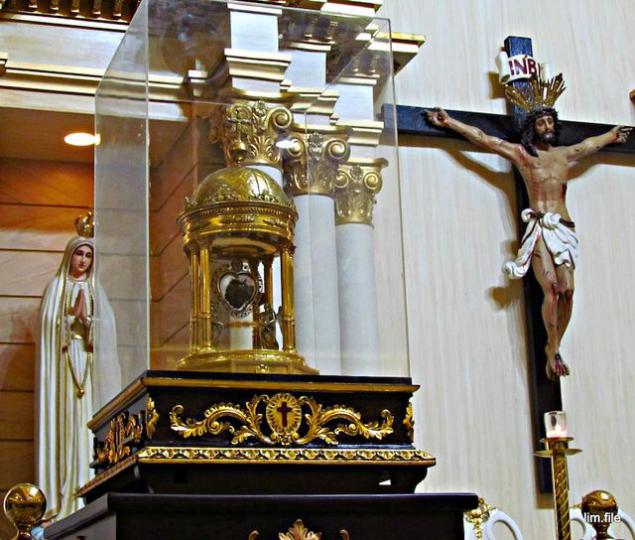

Reliquary of the foot of SV. Blaise, a Bishop who lived in the early 4th century
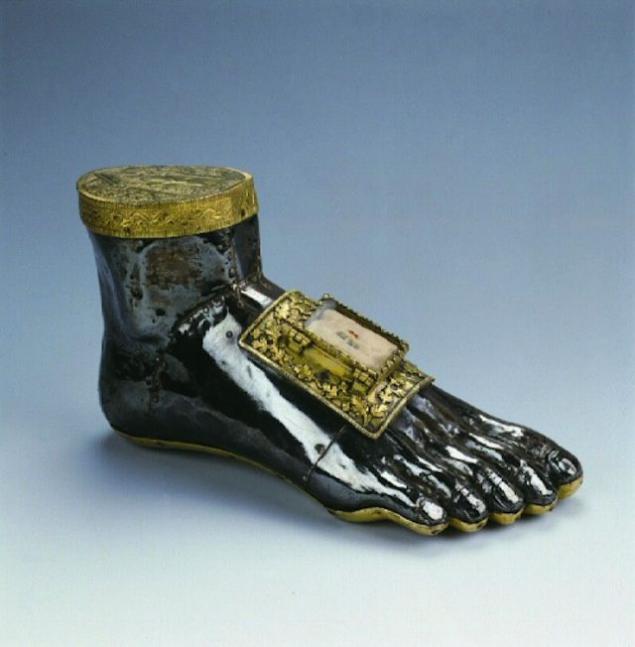
The blood of St. Januarius, Bishop of Naples around 300 ad, currently patron of the city (kept in the Naples Cathedral, the Royal chapel of the treasure of St. Januarius, Naples, Italy)

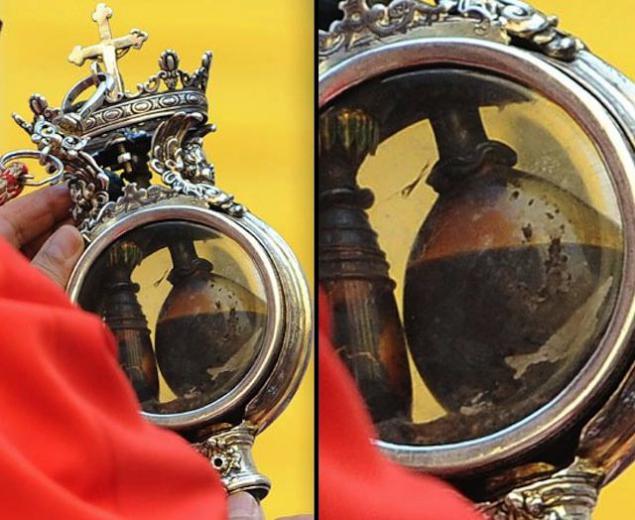
Blood miraculously again becomes liquid three times a year. If this does not happen on a certain day, bad things happen. If this does not happen, then there is an earthquake, or the eruption of mount Vesuvius.
The head of St. John Chrysostom, Archbishop of Constantinople of the late 4th and early 5th century
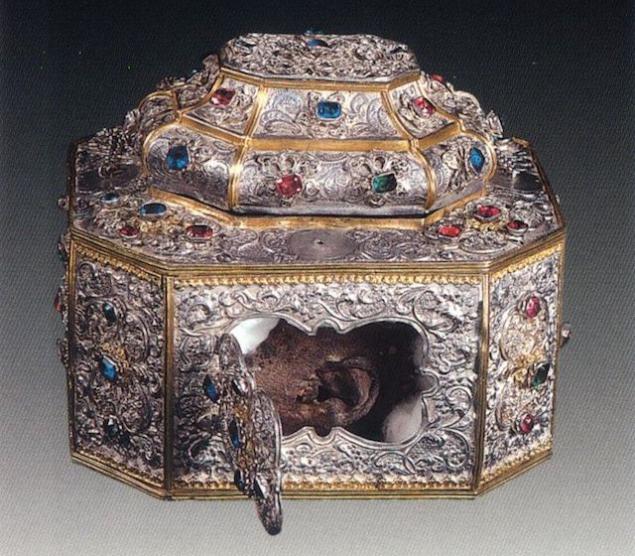
The so-called "Sacred right" — the mummified right fist of the first king of Hungary. During the reign of between 1000 and 1038 (stored in the Basilica of king Saint Stephen in Budapest)

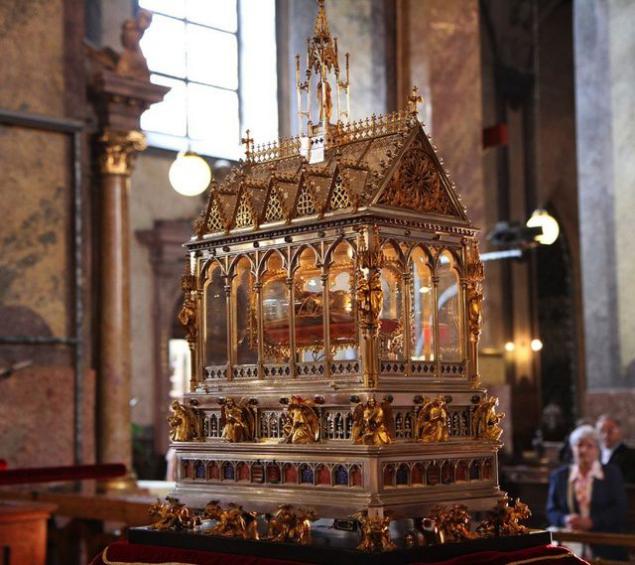
The sacred relic tooth of the Buddha (Kandy, Sri Lanka)

After the death of Buddha in 543 BC and the subsequent cremation, his left canine was restored.
Trail and part of the beard of the prophet Muhammad. Stored in Turkey
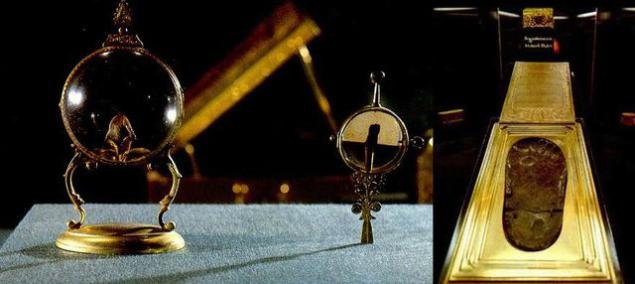
The fabric was an Italian priest of the 16th century Philip Neri, the "Apostle of Rome".
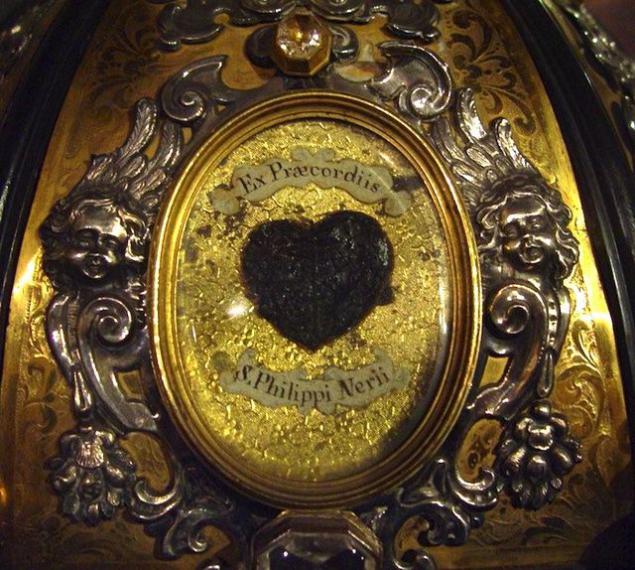
Blessed is the tongue and jaw of St. Anthony of Padua

32 years after the death of Anthony of Padua in 1263, his remains was decided to move to a new Basilica. When the crypt was opened, the priests found only the tongue and jaw.
The Holy foreskin, the product of the circumcision of Jesus
In the middle ages, some churches claimed that they have the foreskin of Jesus, sometimes at the same time. The last mention of the Holy foreskin refers to 1983. That year it was stolen is unknown. About the fate of the Holy foreskin is still unknown.
The most controversial aspect of many religions is a history of preserving "relics," or to put it bluntly samples taken from the bodies of the saints. Here are some of the more unusual examples of objects for veneration.
The hand of the Jesuit missionary of the 16th century, St. Francis Xavier (stored in the gesù in Rome)


His right hand of the missionary was cut off from his mummified corpse. Cut it in Old Goa, India in 1614 and now it is kept in Rome.
It turns out that it is so sacred that the right hand followed the left, which now is said to be in Japan.
The shroud of Turin with the mysterious image of Jesus Christ (kept in the Cathedral of St. John the Baptist, Turin, Italy)


The heart of the Holy Camille de Lellis, the founder of the order of Camilliani in the late 16th century


Reliquary of the foot of SV. Blaise, a Bishop who lived in the early 4th century

The blood of St. Januarius, Bishop of Naples around 300 ad, currently patron of the city (kept in the Naples Cathedral, the Royal chapel of the treasure of St. Januarius, Naples, Italy)


Blood miraculously again becomes liquid three times a year. If this does not happen on a certain day, bad things happen. If this does not happen, then there is an earthquake, or the eruption of mount Vesuvius.
The head of St. John Chrysostom, Archbishop of Constantinople of the late 4th and early 5th century

The so-called "Sacred right" — the mummified right fist of the first king of Hungary. During the reign of between 1000 and 1038 (stored in the Basilica of king Saint Stephen in Budapest)


The sacred relic tooth of the Buddha (Kandy, Sri Lanka)

After the death of Buddha in 543 BC and the subsequent cremation, his left canine was restored.
Trail and part of the beard of the prophet Muhammad. Stored in Turkey

The fabric was an Italian priest of the 16th century Philip Neri, the "Apostle of Rome".

Blessed is the tongue and jaw of St. Anthony of Padua

32 years after the death of Anthony of Padua in 1263, his remains was decided to move to a new Basilica. When the crypt was opened, the priests found only the tongue and jaw.
The Holy foreskin, the product of the circumcision of Jesus
In the middle ages, some churches claimed that they have the foreskin of Jesus, sometimes at the same time. The last mention of the Holy foreskin refers to 1983. That year it was stolen is unknown. About the fate of the Holy foreskin is still unknown.




